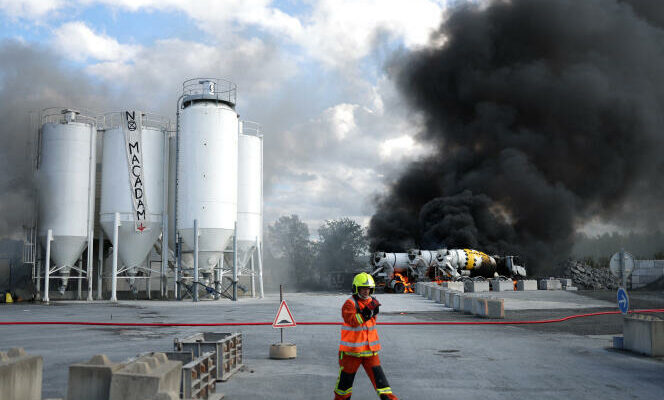They symbolically chose the celebration of Saint Barbara, patron saint of firefighters who died as a martyr, to organize their press conference: Monday, December 4, the collective of CGT agents of the departmental fire and rescue services (SDIS) announced that the CGT federation of public services had, on their behalf, filed a complaint against “endangering others” from the public health center of the Paris judicial court, three days earlier.
For a long time, those present say, they saw nothing unusual in black flies for four days after a fire. Breathing a little smoke was part of “of the profession”: “If you can’t stand that, you shouldn’t be a firefighter!” » The blackish marks on the skin or the jacket were just dirt. No one was aware that we can become contaminated through the skin or by ingestion. And that the intervention hood does not protect against the toxicity of smoke and soot.
However, already in 2003, the Pourny report listed two hundred recommendations to improve their security. In 2017, that of the National Retirement Fund for Local Authority Agents (CNRACL) on “risks relating to fire smoke” in turn issued forty-three. For what consequences? If firefighters notice an improvement in their equipment in the face of the risks that may arise during an intervention, they denounce the lack of consideration of the risks to their health in the medium or long term.
“We now know that going to fire exposes us to carcinogenic, mutagenic and reprotoxic substances. But nothing is done to assess our contamination! A simple periodic medical check-up is not enough. We need regular monitoring, thoraco-abdomino-pelvic scans, as for asbestos workers,” insists Angelo Carlucci, CGT representative of the SDIS du Nord.
Pleural cancer
“During the fire at the Lubrizol factory [en 2019 à Rouen], we were wading through a mess of water and oil. We only got blood tests, not urine, even though that’s what we should have looked for! »deplores Thomas Bru, from the SDIS of Seine-Maritime. “Why don’t the French firefighters, like the Belgians, have logistical vehicles to allow them to send their gear for decontamination and take a shower at the end of the intervention? “, asks Benjamin Calvario, from SDIS du Nord.
In the summer of 2022, The Lancet revealed the conclusions from a study by the International Agency for Research on Cancer : the professional exposure of firefighters is recognized “carcinogenic to humans”responsible, among other things, for cancers of the pleura and the bladder, particularly characteristic of exposure to asbestos.
You have 35% of this article left to read. The rest is reserved for subscribers.
